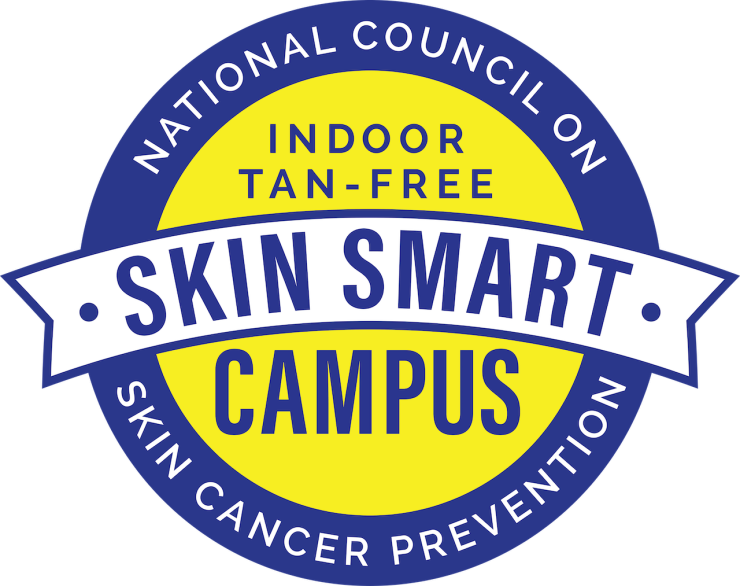
Baylor College Medicine has been recognized as a Skin Smart Campus by The National Council on Skin Cancer Prevention. Ensuring the well-being of our students, we are providing a safe and healthy learning and living environment on and off campus, pledging to keep indoor tanning devices off our campus and our affiliated buildings. We also promote skin cancer prevention policies and education.
The Indoor Tan-Free Skin Smart Campus Initiative, sponsored by the National Council on Skin Cancer Prevention, was established in response to the 2014 U.S. Surgeon General’s Call to Action to Prevent Skin Cancer. This initiative aims to address the strong link between indoor tanning and increased skin cancer risk.
Indoor tanning exposes individuals to ultraviolet (UV) radiation, which is entirely avoidable. By eliminating this exposure, interventions can significantly reduce skin cancer incidence and related health issues.
Skin cancer, including melanoma, is the most prevalent cancer in the United States, and melanoma is particularly common among young adults. The International Agency for Research on Cancer has reported that using indoor tanning facilities before age 35 increases the risk of melanoma by 75 percent.
Skin Cancer Facts
- The two most common skin cancers, basal cell and squamous cell carcinoma, are not deadly but can be costly and disfiguring
- Melanoma, the third most common type, can be deadly
- ⅕ Americans over the age of 70 develop skin cancer
- Melanoma has a 5-year survival rate of 99% when caught early
- Texas ranks third in the nation in new skin cancer cases per year
Risk Factors
- Light skin, or skin that burns, freckles, or reddens easily; but skin of all colors can get skin cancer
- Personal or family history of skin cancer
- Large number of moles
- History of sun exposure and sunburns, especially in early life
- History of indoor tanning
- The average tanning bed gives of 2 to 10 times more UVA radiation than the sun
- Using tanning beds before the age of 35 increases a person’s risk for developing melanoma by 75%
Skin of Color
- Skin cancer can happen in all skin tones - UV protection is important regardless
- Black and Hispanic patients are more likely to receive a melanoma diagnosis at a later stage as compared to White patients
- Common sites for skin cancer in people of color include palms of the hands, soles of the feet, under the nail and around the nail area
- No matter your skin tone, UV radiation can lead to skin damage, premature aging, and hyperpigmentation. Protecting your skin is important
Sun Safe Practices
- Seek shade
- Wear protective clothing
- Long sleeves and pants with denser fabric weaves or built in UV protection
- Wide brimmed hats and sunglasses
- Closed toe shoes and socks that cover the ankle
- Wear sunscreen
- Choose a broad spectrum UVA and UVB, at least SPF30
- Reapply at least every two hours, and more frequently if sweating, swimming, or using a towel
- Check the UV index - know before you go
- The UV index can be found in most weather apps, including this one
- UV is strongest between 10 a.m. - 4 p.m.. Avoid the sun at these times if possible.
- Sun protection is recommended at a UV level of 3 and above
- Texas’ year-round average is at a 9
- If the UV index is above 6, its best to limit time in the sun
ABCDEs of Melanoma
The ABCDEs of Melanoma is a helpful acronym to help you recognize potentially cancerous spots on your body. You should perform a skin check once a month. Take the time - melanoma is highly treatable when caught early. See the American Cancer Society's guide to performing a self exam.

One side of the mole does not look the other.

Blurry or jagged edges.

The mole is different colors, such as tan, black or brown. It may have some areas pink, blue, red or white.

The mole is larger than a pencil eraser, about ¼ of an inch.

Unlike a regular mole, melanoma may change size, shape, color, elevation or more over time.








